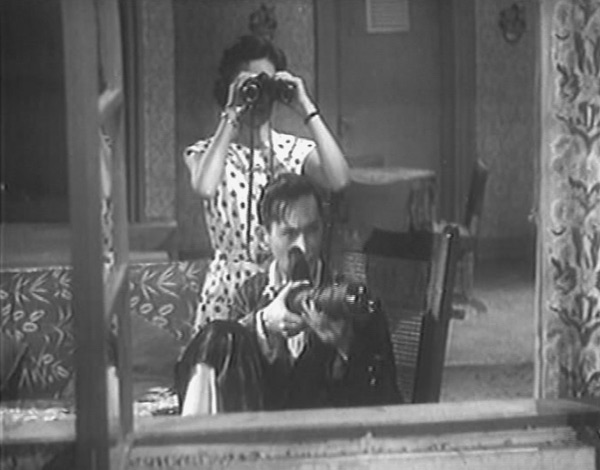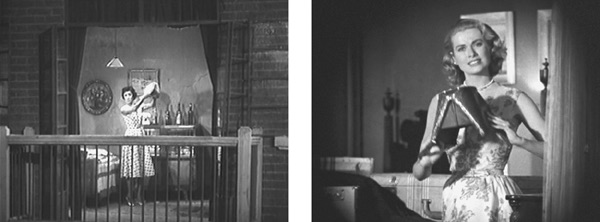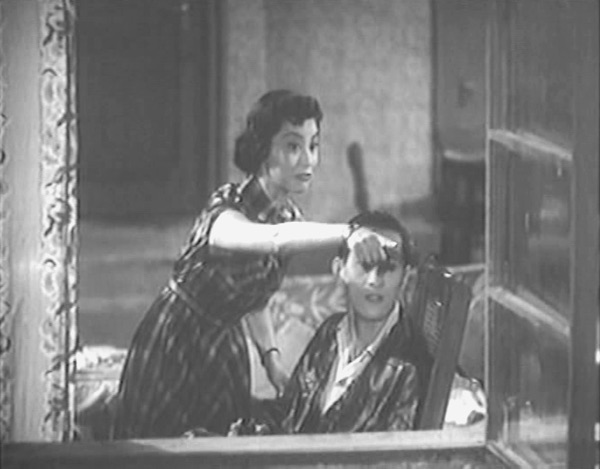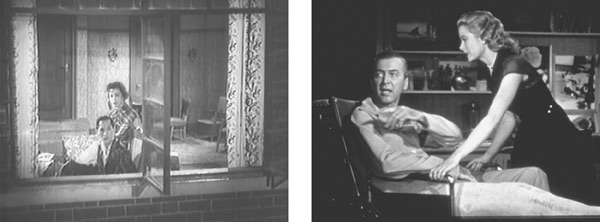Surveillance, here loosely defined as any technology or practice engaged in social, spatial, and data monitoring, is a ubiquitous aspect of world cinema, simultaneously influencing the medium’s visual aesthetics and providing a compelling subject of narrative representation. Along with its attendant manifestations, such as voyeurism, eavesdropping, policing, predictive behavior, risk assessment, financial and actuarial speculation, surveillance has been a recurring aspect of landmark films from the inception of the art form. Indeed, the cinematic exploration of surveillance ethics and aesthetics that Tom Gunning finds in early films such as The Arrest of a Pickpocket (1895), A Subject for the Rogue’s Gallery (1904), Falsely Accused (1908), and Le pickpocket mystifié (1911) has, if anything, only intensified in the post-9/11 climate of global security concerns and controversies regarding mass electronic data mining.1 Thus, in recent years, media scholars such as Catherine Zimmer, Sébastien Léfait, and Garrett Stewart have each separately identified “surveillance cinema” as a distinct subgenre or trend in contemporary film.2 Building on earlier work by Norman Denzin, John Turner, and Thomas Levin, their critical analyses of movies ranging from Fritz Lang’s Expressionist M (1931) to Hollywood sci-fi spectacles such as Déjà Vu (Tony Scott, 2006) and Source Code (Duncan Jones, 2011) fashion a de facto canon of world surveillance film.3
Nonetheless, the movies analyzed by those studies are almost without exception filmed and set in the Western world, leaving the racial, cultural, and geographic homogeneity of that film tradition largely unnoticed and unexamined.4 Although this hemispheric bias no doubt reflects Hollywood’s hegemony—and that of Western culture in general—it is also outdated in light of today’s global instantaneity and the ascendant power of Eastern and Pacific Rim countries such as China and India. Asian cinema’s exclusion from these studies is particularly regrettable given the region’s rich cinematic traditions and the distinct and various ways that surveillance manifests across colonial, Communist, and non-Western spaces. For a glimpse of how intimately and insightfully surveillance may be engaged by a nonmainstream or non-Hollywood movie set outside the Global North, one has only to look at The Battle of Algiers, the now-classic 1966 film about the Algerian revolution. Shot on location in the Casbah by a collaboration of local activists and Italian neorealist filmmakers, the movie is credited with helping catalyze resistance to French colonization during its initial release, and in recent years it has enjoyed renewed significance as American military and foreign policy strategists recommend the film as a case study in techniques of guerrilla warfare and control of civic unrest.5
Like The Battle of Algiers, Hong Kong cinema also originates in a society steeped in the intersection of colonial influence with local ethnic culture, and its cinematic representations of surveillance deserve consideration even if only on the basis of its status as one of the world’s most successful film industries. Many moviegoers are already familiar with Infernal Affairs, the 2002 local blockbuster about a cat-and-mouse game between an undercover cop working a long-term assignment in a gang and the gang mole inside the police force who is ordered to find him. If Western audiences had not already heard about the Hong Kong film as a result of its regional success, the movie became globally recognizable several years later when it was remade as The Departed, Martin Scorsese’s 2006 movie that won the Oscar for Best Picture. Although the ease with which the Hong Kong film was adapted into a major Holly wood feature might suggest the former as a genre exercise devoid of specifically local attributes, Hong Kong historian and cultural studies scholar Law Wing-sang points out that Infernal Affairs belongs to a long tradition of undercover-cop movies crucial to Hong Kong film and cultural identity.6 This affinity between global culture and the motifs of covert operations prevalent in Hong Kong cinema demonstrates the insights of a regional, East Asian, putatively non-Western, colonial, and postcolonial cinema in contributing to Western-dominated surveillance discourse. Both eminently local and profoundly exportable, Infernal Affairs exemplifies Hong Kong surveillance cinema’s salience for its distinctly local tradition of Hong Kong undercover-cop movies and the way that seemingly unique local product intervenes in more globally familiar, Western-dominated surveillance culture.
REAR WINDOW ETHICS
In fact, Infernal Affairs is hardly the first instance of Hong Kong cinema’s engagement with world surveillance cinema traditions, further revealing the complex ways in which it both engages and departs from dominant Western modes. In 1955, only a year after the release of Alfred Hitchcock’s Rear Window, local theaters were also screening Backyard Adventures, a Hong Kong remake of the Hollywood film (Fig. I.1).7 Best known as a rapidly assembled charity effort to raise funds for the family of comedian Yee Chau-shui, who had abruptly passed away, the movie also warrants attention because of its curious departures from world cinema’s archetypal surveillance film. True to much Hong Kong cinema, Backyard Adventures may at first appear a derivative imitation, using the same Chinese title as used for Rear Window’s local exhibition and closely following Rear Window’s premise of a wheelchair-bound photographer who spends his convalescence peering at his neighbors across a mutual courtyard. It is so closely modeled on the Hollywood original that, at times, Backyard Adventures reproduces Rear Window with shot-for-shot fidelity (Fig. I.2). But where Hitchcock’s film begins with the photographer’s nurse and girlfriend criticizing his voyeurism, deploring his “rear window ethics” and the fact that “we’re becoming a race of Peeping Toms,” the Hong Kong film notably lacks any such anxiety. Instead, in pointed contrast to the movie’s classic Hollywood precedent, Backyard Adventures shows the man’s fiancée encouraging him to pass the time through voyeurism, even fetching him binoculars and taking the step of stimulating his viewing by pointing to individual windows and narrating imagined stories (Fig. I.3).



In fact, these striking visual and thematic differences between Holly wood’s globally canonical surveillance film and its regional Hong Kong adaptation are only magnified as Backyard Adventures proceeds. While many other notable discrepancies arise—ranging from the latter film’s reversal of Hitchcock’s original stage blocking by having the love interest wheel the photographer toward the window (Fig. I.4), to the inclusion of completely unprecedented elements such as a group of half-naked fitness enthusiasts whose visual spectacle is surpassed only by a Chinese opera troupe that abruptly files in to perform—nowhere is the Hong Kong movie’s idiosyncrasy more apparent than in its utter abandonment of the murder mystery that is the defining attribute of Hitchcock’s film. Unlike the Hollywood movie, the Hong Kong film has no criminal discovery, as the photographer’s inadvertently overhearing a nighttime scream is dismissed as an adverse reaction to medication, and even the killing of a troublesome dog (a plot detail consistent with the original film) is literally laughed off by the characters. Thus, much like the film’s overall displacement of Hitchcockian thriller into a quintessentially Hong Kong instance of playful, multigeneric, rapidly produced pastiche, Backyard Adventures revels in unqualified enjoyment of visual observation, voyeurism, and surveillance never imagined in Hitchcock’s canonical surveillance film.

MADE IN HONG KONG
Both Infernal Affairs and Backyard Adventures raise several questions that guide this book. What do these Hong Kong movies suggest about local surveillance culture, either within Hong Kong itself or in terms of the cinema’s relationship to the surveillance themes that pervade so much world film? How are these cinematic images of surveillance shaped by Hong Kong’s complex colonial and postcolonial history as well as its having a highly successful, regionally dominant film industry? And what does Hong Kong surveillance cinema contribute to the global discourse on surveillance that otherwise remains overly Western-centric?
To answer these questions, this book begins by interrogating some of the fundamental assumptions underlying critical studies of surveillance cinema. As academic disciplines, both film and surveillance studies tend to explore surveillance cinema as unmediated, relatively straightforward images of surveillance culture without sufficient consideration of either the global map in which these cinemas take place or the various ways in which local film traditions might shape different surveillance imagery. As a result, scholarly studies of surveillance cinema promulgate a geographically and culturally limited landscape of surveillance culture in which predominantly European and American movies corroborate the historical and speculative societies described by George Orwell, Aldous Huxley, and Michel Foucault. Although the images and narratives depicted in these classic works are primarily critical and negative, their geographic bias nevertheless contains a degree of self-congratulation. Because surveillance has long been characterized as a sign of social modernity and little acknowledgment is made of the difference between cinematic representation and actual human experience, the hemispheric bias in most surveillance film studies perpetuates a notion that surveillance is an attribute limited to Western modernity.
Within surveillance studies, for example, David Lyon’s frequent references to American and European movies exemplify this one-sidedness. His many works are seeded with references to movies like Gattaca, Minority Report, and The End of Violence; as Lyon justly reasons, although “some people may have read social science or philosophical work on surveillance, a much larger audience will have seen a surveillance movie.”8 While these films offer compelling and accessible glimpses of surveillance themes and concepts and critical discussions of the films are often focused on esoteric legal and technical questions, Lyon’s references downplay distinctions that might be specific to European and Hollywood film styles or the American, German, and New Zealand directors behind the films. In some ways this critical prioritizing of white bodies and English-language settings is not surprising, as it resembles the landscape of surveillance studies—and surveillance geopolitics—itself. Like UKUSA or “Five Eyes,” the global intelligence network in which predominantly white, Western, English-speaking countries of Britain, Canada, New Zealand, and Australia cooperate with the United States in an information-sharing partnership that reinforces American hegemony, surveillance studies’ uses of film perpetuate a geographic and cultural bias that aligns modernity primarily with Western culture.9
Film studies is not much different, despite the discipline’s greater attention to the discrepancy between reality and representation and the role of film tradition in shaping or inspiring representation itself. Although film studies has long explored the distinct linguistic and cultural attributes of “national” cinema, critical writing about surveillance’s reflexive properties—the implicit self-reference and media representation common in filmic representations of visual and auditory monitoring—resembles surveillance studies in that it also tends to overlook cultural difference. The oft-referenced essays by film scholars and theorists John Turner and Thomas Levin are cases in point. Building on observations about spectatorship and the cinematic apparatus made in seminal essays by Christian Metz or about movies like Rear Window, Turner and Levin claim that the proliferating time stamps, optical markers, screens within screens, and other visual and narrative attributes of 1980s and 1990s cinema mirror surveillance’s dramatic expansion in the second half of the twentieth century. Yet the movies that both authors reference—which, in addition to other previously mentioned titles, include WarGames (John Badham, 1983), Thelma & Louise (Ridley Scott, 1991), Sneakers (Phil Robinson, 1992), Menace II Society (Hughes Brothers, 1993), Enemy of the State (Tony Scott, 1998), and Timecode (Mike Figgis, 2000)—are merely a more extensive version of the Western filmography typical of Lyon and other surveillance scholars. One has to wonder how these otherwise illuminating studies of cinematic surveillance would benefit from the inclusion of important and intriguing entries of world film such as High and Low, Akira Kurosawa’s tautly engrossing 1963 procedural about the investigation of a kidnapping—and a genre movie arguably as engaged with epistemological questions as the director’s other, more critically commanding film, Rashomon—or the more recent Neighboring Sounds, a 2012 Brazilian thriller about an affluent neighborhood that unknowingly employs a private security service staffed by the adult children of their exploited former servants.10
It is precisely this tension between surveillance cinema’s reflexive conventions and its reflectionist properties as an ethnographic glimpse into surveillance culture itself that makes Hong Kong cinema a crucial resource, not just for Asian film specialists and scholars of world film and surveillance culture but indeed for anyone concerned about surveillance’s mounting impact throughout the world. As many scholars have already demonstrated, Hong Kong has always had a complicated relationship with Hollywood and the global culture that it traditionally shapes.11 In the specific case of surveillance cinema, this means that Hong Kong surveillance films such as Backyard Adventures and Infernal Affairs are unusually fruitful sites of global scrutiny, despite—or precisely because—their frequent engagement with better-known Hollywood surveillance imagery is informed both by local surveillance culture and by the cinema’s aspirations to rival Hollywood itself. Although the current Hong Kong film industry, as a result of a precipitous decline during the years leading up to Hong Kong’s 1997 reunification with China, no longer approximates the level of productivity and regional dominance it once commanded, it is telling that surveillance-themed movies like Infernal Affairs continue to be a recurring strain among the Hong Kong movies that sustain local box office and that provide the means by which Hong Kong film influences global culture. Despite China’s recent emergence as the world’s largest film market—as well as its long-standing notoriety as an intensely surveilled state—it is politically subordinate but culturally important Hong Kong whose cinema presents insights for global surveillance culture.
1. See, e.g., Tom Gunning, “What I Saw from the Rear Window of the Hotel des Folies-Dramatiques, or the Story Point of View Films Told,” in Ce que je vois de mon ciné: La représentation du regard dans le cinéma des premiers temps, ed. Andre Gaudreault (Paris: Merudiens Klincksieck, 1988), 33–43, “Tracing the Individual Body: Photography, Detectives and Early Cinema,” in Cinema and the Invention of Modern Life, ed. Leo Charney and Vanessa R. Schwartz (Berkeley: University of California Press, 1996), 15–45, and The Films of Fritz Lang: Allegories of Vision and Modernity (London: BFI, 2000).
2. Catherine Zimmer, Surveillance Cinema (New York: NYU Press, 2015), and “Surveillance Cinema: Narrative between Technology and Politics,” Surveillance & Society 8, no. 4 (2011): 427–40; Sébastien Lefait, Surveillance on Screen: Monitoring Contemporary Films and Television Programs (Lanham, MD: Scarecrow Press, 2012); and Garrett Stewart, Closed Circuits: Screening Narrative Surveillance (Chicago: University of Chicago Press, 2015), and “Surveillance Cinema,” Film Quarterly 66, no. 2 (2012): 5–15. For other uses of the “surveillance cinema” rubric, see Mia Galuppo and Chris Godley, “Surveillance Cinema: 14 Movies Featuring Big Brother,” Hollywood Reporter, June 21, 2013, http://www.hollywoodreporter.com/gallery/surveillance-cinema-14-movies-featuring-566300/1-v-for-vendetta.
3. Norman K. Denzin, The Cinematic Society: The Voyeur’s Gaze (London: SAGE Publications, 1995); John S. Turner, “Collapsing the Interior/Exterior Distinction: Surveillance, Spectacle, and Suspense in Popular Cinema,” Wide Angle 20, no. 4 (1998): 93–123; Thomas Y. Levin, “Rhetoric of the Temporal Index: Surveillant Narration and the Cinema of ‘Real Time,’” in Ctrl [Space]: Rhetorics of Surveillance from Bentham to Big Brother, ed. Thomas Y. Levin, Ursula Frohne, and Peter Weibel, 578–93 (Cambridge, MA: MIT Press, 2002). Also see Wheeler Winston Dixon, It Looks at You: The Returned Gaze of Cinema (Albany: State University of New York Press, 1995), which is not as explicitly focused on surveillance as Turner and Levin but is exactly contemporary to Denzin and parallels that book’s study of cinematic reflexivity.
4. For example, Norman Denzin’s chapter on Asian detective figures such as the fictional Charlie Chan, Mr. Moto, and Mr. Wong still focuses only on Hollywood cinema.
5. Michael T. Kaufman, “What Does the Pentagon See in ‘Battle of Algiers’?,” New York Times, September 7, 2003, section 4, 3.
6. Law Wing-sang, “Hong Kong Undercover: An Approach to ‘Collaborative Colonialism,’” Inter-Asia Cultural Studies 9, no. 4 (2008): 522–42, and “The Violence of Time and Memory Undercover: Hong Kong’s Infernal Affairs,” Inter-Asia Cultural Studies 7, no. 3 (2006): 383–402. For a wry commentary on Hollywood’s easy adaptation of Infernal Affairs, see Tom Scocca, “Martin Scorsese, Now a Great Hong Kong Director,” New York Observer, October 9, 2006.
7. Rear Window opened in New York on August 1, 1954. Backyard Adventures opened in Hong Kong sixteen months later, on December 7, 1955, less than half a year after Rear Window played in Hong Kong.
8. David Lyon, Surveillance Studies: An Overview (Cambridge: Polity, 2007), 140. For other critical and theoretical references to such films among surveillance studies, see Christopher Gad and Lone Koefed Hansen, “A Closed Circuit Technological Vision: On Minority Report, Event Detection and Enabling Technologies,” Surveillance & Society 11, no. 1/2 (2013): 148–62; Michael J. Shapiro, “Every Move You Make: Bodies, Surveillance, and Media,” Social Text 83, no. 2 (2005): 21–34; Richard Maxwell, “Surveillance: Work, Myth, and Policy,” Social Text 83, no. 2 (Summer 2005): 1–19; and Dietmar Kammerer, “Video Surveillance in Hollywood Movies, Surveillance & Society 2, no. 2/3 (2004): 464–73.
9. For information on UKUSA, see Nicky Hager, Secret Power: New Zealand’s Role in the International Spy Network (Nelson, New Zealand: Craig Potton, 1996); and James Bamford, The Shadow Factory: The NSA from 9/11 to the Eavesdropping on America (New York: Anchor, 2009).
10. Few scholarly studies have yet been published about Neighboring Sounds, but for an excellent essay on the film’s “intimate relationship between security and paranoia,” see A. O. Scott, “The Leisure Class Bears Its Burden,” New York Times, August 23, 2012, C1.
11. See, for example, Gina Marchetti and Tan See Kam, eds., Hong Kong Film, Hollywood and the New Global Cinema: No Film Is an Island (New York: Routledge, 2007); and Chuck Kleinhans, “Becoming Hollywood? Hong Kong Cinema in the New Century,” in Chinese Connections: Critical Perspectives on Film, Identity, and Diaspora, ed. Tan See-Kam, Peter X. Feng, and Gina Marchetti (Philadelphia: Temple University Press, 2009), 109–21.